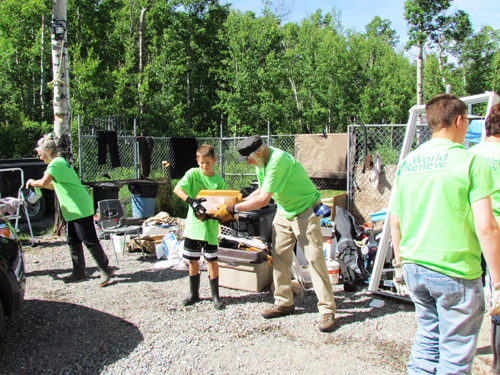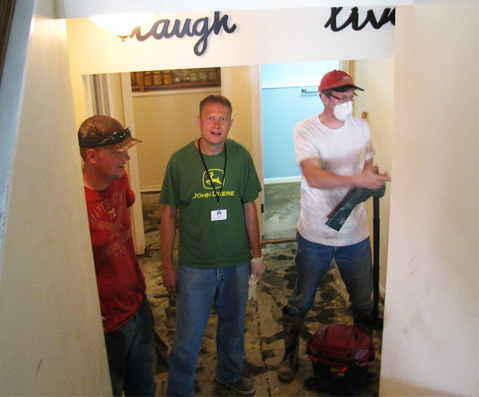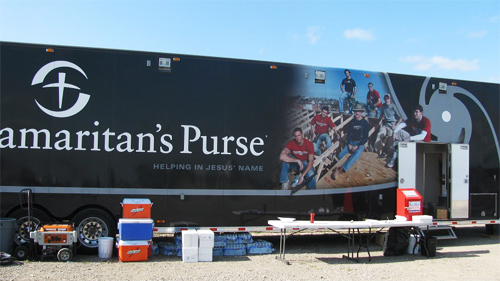
In June 2013, southern Alberta received more than 200 mm (8 inches) of rain in less than 36 hours, affecting the Bow and Highwood River watersheds in the western portion of the province. As a result, the normally very small Cougar Creek in Canmore, Alberta, overflowed its banks, flooded the town, and severed the Trans-Canada Highway near Banff National Park (the major east-west link) for a week.
The eastern part of High River (about 1000 homes) was built on a floodplain which was actually lower than the river and protected by dikes. The dikes were overcome by the overflowing water, and as a result the homes there are sitting in a large "lake." The water is being pumped into an adjacent canal at a volume of one Olympic-sized swimming pool every six minutes. It will take some time to dry this area, and only then will the residents be allowed back in. There is a concern about mold problems in these homes going forward.
In the last two weeks, the citizens of Calgary have launched a gigantic effort to restore their homes and businesses, but much more needs to be done. Two Christian Reformed churches (CRCs) were directly affected: one was located in the floodplain, and the other is atop a hill that was eroded by the rushing water. First Nations reservations both east and west of Calgary were also severely affected.
In all of the destruction caused by the flood, the city of High River, with 13,000 inhabitants, was the worst hit. The Highwood River usually crests high in the spring, but the residents have no living memory of flooding of this magnitude. The entire town was evacuated for more than a week while assessors determined the safety of each home and the police secured roadblocks to prevent anyone from entering.
Two weeks after the flood, about half the population of High River gained access to their residences to determine the extent of the damage, and most of it was extensive. In just two days, residents and volunteers removed and sealed fridges and freezers for disposal. Furniture, carpeting, and personal items such as books littered the sidewalks on their way to disposal. Most of the homes are still without electricity or running water.World Renew is providing volunteer help in Alberta in collaboration with our partners Samaritan’s Purse and Mennonite Disaster Services,” says Bill Adams, director of World Renew DRS, “A number of CRC churches in southern Alberta are participating, and some of these groups helped in Calgary and are now focusing their efforts on the High River area.”
Haasdyk says that many more volunteers from the area are still needed due to the magnitude of the damage. While hundreds of homes are being considered for demolition, there are more than 700 homes that are believed to be reparable but are still under water halfway to the roof.
“World Renew DRS volunteers are centered just north of High River, where they receive equipment and safety instructions before entering the flood zone,” says Haasdyk. “Volunteer groups from Calgary, Iron Springs, and Granum CRCs are helping with clean up and volunteer support, and Trinity United Reformed Church in Lethbridge is preparing to send a group of volunteers as well.”
“So far,” Adams says, “the indications are that restoration efforts in Alberta will take some time. Clean up, assessment, or rebuilding needs will be determined as the flood water recedes. In the meantime, we are working with the local communities to help them better prepare for the next possible high-water disaster.”
For more information about volunteering with World Renew DRS in the southern Alberta flood response, click here.
To donate to Southern Alberta Flooding 2013, click here.


